($39): 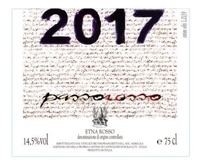 Andrea Franchetti is either brilliant or crazy. He built a wine estate, Tinoro, from scratch in Tuscany’s Val d’Orcia and makes wine there, not from Sangiovese, but from solely Bordeaux varieties. He has another estate in Tuscany, Sancaba, dedicated to plant, of all things, Pinot Noir. … Read more
Andrea Franchetti is either brilliant or crazy. He built a wine estate, Tinoro, from scratch in Tuscany’s Val d’Orcia and makes wine there, not from Sangiovese, but from solely Bordeaux varieties. He has another estate in Tuscany, Sancaba, dedicated to plant, of all things, Pinot Noir. … Read more
Category Archives: Reviews
River Road Family Vineyards and Winery, Russian River Valley (Sonoma County, California) Pinot Noir “Stephanie’s Cuvée” 2017
($30): 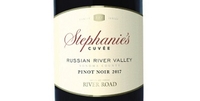 With raspberry-like nuances, this fruit-forward Pinot Noir has moderate weight and suave tannins. Lively acidity keeps it fresh. The 14.3 percent stated alcohol, noticeable by a slightly hot finish, adds a pleasing roundness to the wine. Thankfully, not being a bombastic wine, it would go nicely with grilled salmon.… Read more
With raspberry-like nuances, this fruit-forward Pinot Noir has moderate weight and suave tannins. Lively acidity keeps it fresh. The 14.3 percent stated alcohol, noticeable by a slightly hot finish, adds a pleasing roundness to the wine. Thankfully, not being a bombastic wine, it would go nicely with grilled salmon.… Read more
River Road Family Vineyards and Winery, Alexander Valley (Sonoma County, California) Cabernet Sauvignon Reserve 2018
($25): 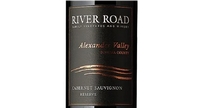 Here is a polished Cabernet Sauvignon that displays black fruit enrobed in suave tannins. Despite plenty of dark fruit flavors, it’s not overweight as evidenced by its modest — by today’s standards — 13.9 percent stated alcohol. Its creamy texture and kiss of vanilla-like notes allows for immediate enjoyment.… Read more
Here is a polished Cabernet Sauvignon that displays black fruit enrobed in suave tannins. Despite plenty of dark fruit flavors, it’s not overweight as evidenced by its modest — by today’s standards — 13.9 percent stated alcohol. Its creamy texture and kiss of vanilla-like notes allows for immediate enjoyment.… Read more
Inama, Soave Classico DOC (Veneto, Italy) Vigneti di Foscarino Vecchie Vigne 2017
($23, Dalla Terra Winery Direct): 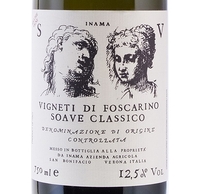 One of the reasons I love Soave is that — when made by top producers such as Inama — the wines over-deliver. The region is still trying to recover from its reputation of dilute innocuous wines. … Read more
One of the reasons I love Soave is that — when made by top producers such as Inama — the wines over-deliver. The region is still trying to recover from its reputation of dilute innocuous wines. … Read more
Mionetto, Valdobbiadene Prosecco Superiore DOCG (Veneto, Italy) Extra Dry NV
($19, Mionetto USA): 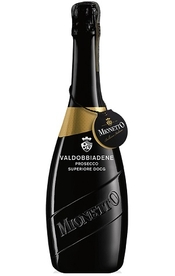 There’s Prosecco, and then there’s Valdobbiadene Prosecco. The difference is location, location, location: where the grapes grow. Tasting the wonderful range of Mionetto’s Prosecco is extremely instructive. Their DOC Prosecco Treviso, reviewed here previously, is very good and very well-priced. … Read more
There’s Prosecco, and then there’s Valdobbiadene Prosecco. The difference is location, location, location: where the grapes grow. Tasting the wonderful range of Mionetto’s Prosecco is extremely instructive. Their DOC Prosecco Treviso, reviewed here previously, is very good and very well-priced. … Read more
Bodegas Caro, Mendoza (Argentina) “CARO” 2016
($60, Taub Family Selections): 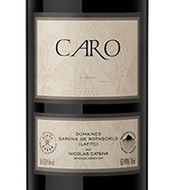 It should come as no surprise that a collaboration, now about two decades old, between two of the greatest names in wine should produce a fabulous wine. Bodegas Caro is a joint effort of Domaines Barons de (Lafite) Rothschild and Nicolas Catena, one of Argentina’s leading wine producers. … Read more
It should come as no surprise that a collaboration, now about two decades old, between two of the greatest names in wine should produce a fabulous wine. Bodegas Caro is a joint effort of Domaines Barons de (Lafite) Rothschild and Nicolas Catena, one of Argentina’s leading wine producers. … Read more
Tua Rita, Toscana Rosso IGT (Tuscany, Italy) “Rosso dei Notri” 2017
($22, Winebow):  Tua Rita, best known for their show-stopping monovarietal Merlot called Redigaffi that routinely sells at release for $300+, makes two other wines consumers should embrace. This one, a blend of Sangiovese, Merlot, Cabernet Sauvignon and Syrah, should be in everyone’s cellar. … Read more
Tua Rita, best known for their show-stopping monovarietal Merlot called Redigaffi that routinely sells at release for $300+, makes two other wines consumers should embrace. This one, a blend of Sangiovese, Merlot, Cabernet Sauvignon and Syrah, should be in everyone’s cellar. … Read more
Tua Rita, Toscana Rosso IGT (Tuscany, Italy) “Perlato del Bosco” 2016
($30, Winebow):  Perlato del Bosco shows the broad talents at Tue Rita. They make the Redigaffi Super Tuscan (and Super Priced) Merlot as well as the bargain-priced and delicious Rossi dei Notri. Here’s Perlato del Bosco, a marvelous wine made entirely from Sangiovese and displaying a completely different profile. … Read more
Perlato del Bosco shows the broad talents at Tue Rita. They make the Redigaffi Super Tuscan (and Super Priced) Merlot as well as the bargain-priced and delicious Rossi dei Notri. Here’s Perlato del Bosco, a marvelous wine made entirely from Sangiovese and displaying a completely different profile. … Read more
Principe Corsini, Chianti Classico DOCG (Tuscany, Italy) “Le Corti” 2015
($24): 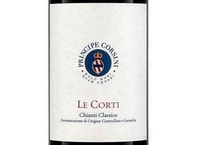 The more I taste Chianti Classico wines from the 2015 vintage, the more I like them. Take this one, for example, from Principe Corsini, whose consistency makes them an easy choice. It’s fresh and lively with zippy Tuscan acidity that balances the cherry-like fruit characteristic of Sangiovese. … Read more
The more I taste Chianti Classico wines from the 2015 vintage, the more I like them. Take this one, for example, from Principe Corsini, whose consistency makes them an easy choice. It’s fresh and lively with zippy Tuscan acidity that balances the cherry-like fruit characteristic of Sangiovese. … Read more
Minuty, Côtes de Provence (Provence, France) “Prestige” 2019
($27, Vintus): 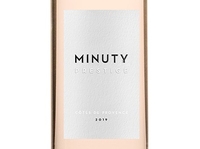 Readers of my recommendations recognize that I am not enthralled with most still rosé wines on the market, preferring to chill a light red. This one stopped me in my tracks. Its pale pink color suggested an innocuous wine. … Read more
Readers of my recommendations recognize that I am not enthralled with most still rosé wines on the market, preferring to chill a light red. This one stopped me in my tracks. Its pale pink color suggested an innocuous wine. … Read more
Los Vascos, Colchagua Valley (Chile) Chardonnay 2019
($10, Taub Family Selections): 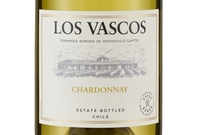 If there’s a better ten-dollar Chardonnay on the market, please tell me. Racy and vibrant, with a touch of spice, it is delicate, but not vapid. It has surprising weight and depth for the price. If you’re looking for opulence kissed by vanilla from oak aging, you will not embrace this wine. … Read more
If there’s a better ten-dollar Chardonnay on the market, please tell me. Racy and vibrant, with a touch of spice, it is delicate, but not vapid. It has surprising weight and depth for the price. If you’re looking for opulence kissed by vanilla from oak aging, you will not embrace this wine. … Read more
Los Vascos, Colchagua Valley (Chile) “Le Dix de Los Vascos” Estate Grown 2016
($61, Taub Family Selections):  Los Vascos, the Domaines Barons de Rothschild (Lafite) property in Chile, unsurprisingly makes great red wines. This one, Le Dix, is their top-of-the-line offering, and is a blend of Cabernet Sauvignon (85 percent) with equal amounts of Syrah, Carmenère and Cabernet Franc. … Read more
Los Vascos, the Domaines Barons de Rothschild (Lafite) property in Chile, unsurprisingly makes great red wines. This one, Le Dix, is their top-of-the-line offering, and is a blend of Cabernet Sauvignon (85 percent) with equal amounts of Syrah, Carmenère and Cabernet Franc. … Read more
Penner-Ash, McMinnville (Oregon) Old Vine Riesling Hyland Vineyard 2017
($35): 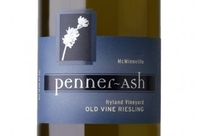 Many consumers shy away from Riesling because it comes in a range of sweetness, which is not always apparent from the label. Penner-Ash uses the scale developed by the International Riesling Foundation on the back label that indicates this wine is “medium dry” on the scale that goes from “dry” (the least sweet) to “sweet” with “medium dry” and “medium sweet” in between. … Read more
Many consumers shy away from Riesling because it comes in a range of sweetness, which is not always apparent from the label. Penner-Ash uses the scale developed by the International Riesling Foundation on the back label that indicates this wine is “medium dry” on the scale that goes from “dry” (the least sweet) to “sweet” with “medium dry” and “medium sweet” in between. … Read more
Bibi Graetz, Toscana IGT (Tuscany, Italy) “Bollamatta” Rosé NV
($26, Folio Fine Wine Partners):  This label of this rosé lacks identity, so I relied on Bibi Graetz’s website, which explained that it’s a Tuscan wine made entirely from 50 to 80-year-old Sangiovese vines. The grape variety and the age of the vines helps explain why this bubbly delivers such pleasure. … Read more
This label of this rosé lacks identity, so I relied on Bibi Graetz’s website, which explained that it’s a Tuscan wine made entirely from 50 to 80-year-old Sangiovese vines. The grape variety and the age of the vines helps explain why this bubbly delivers such pleasure. … Read more
Grattamacco, Bolgheri Superiore DOC (Tuscany, Italy) “L’Alberello” 2015
($80, Winebow):  The Bertarelli family, who owns Colle Massari, a leading estate in Montecucco, also owns Grattamacco in Bolgheri. They founded Grattamacco in 1977, shortly after Sassicaia was established nearby. Grattamacco’s flagship wine, also named Grattamacco and priced at $135+ a bottle, is an unusual blend for Bolgheri because it includes a little Sangiovese, a grape not widely planted in that part of Tuscany. … Read more
The Bertarelli family, who owns Colle Massari, a leading estate in Montecucco, also owns Grattamacco in Bolgheri. They founded Grattamacco in 1977, shortly after Sassicaia was established nearby. Grattamacco’s flagship wine, also named Grattamacco and priced at $135+ a bottle, is an unusual blend for Bolgheri because it includes a little Sangiovese, a grape not widely planted in that part of Tuscany. … Read more
Khareba Winery, Kakheti (Georgia) Krakhuna 2017
($15, Provence Wine Imports):  Wines from Georgia — the country, not the state — are all the rage currently, in part because of their eye-catching traditional winemaking technique: Fermenting the wine in qvevri, egg-shaped terracotta pots buried in the ground. It turns out that not all Georgian wines are made that way. … Read more
Wines from Georgia — the country, not the state — are all the rage currently, in part because of their eye-catching traditional winemaking technique: Fermenting the wine in qvevri, egg-shaped terracotta pots buried in the ground. It turns out that not all Georgian wines are made that way. … Read more
Khareba Winery, Kakheti (Georgia) Saperavi 2015
($15, Provence Wine Imports):  The Saperavi (Sah-pay-rah-vee) grape is the most widely planted red variety in the country of Georgia. Similar to Khareba’s white wine from the Krakhuna grape, they also eschew fermentation in qvevri, preferring stainless steel to capture the grape’s fruitiness and keep the wine fresh and bright. … Read more
The Saperavi (Sah-pay-rah-vee) grape is the most widely planted red variety in the country of Georgia. Similar to Khareba’s white wine from the Krakhuna grape, they also eschew fermentation in qvevri, preferring stainless steel to capture the grape’s fruitiness and keep the wine fresh and bright. … Read more
Charles Heidsieck, Champagne (France) “Réserve” Brut NV
($69, Folio Fine Wine Partners):  This is a fabulously complex and elegant Champagne. Yes, it’s pricey for a non-vintage Champagne, but I think it’s worth it. The website says that their non-vintage wine is an equal blend of all three varieties, Chardonnay, Pinot Noir and Pinot Meunier, that has been aged on the lees for three years. … Read more
This is a fabulously complex and elegant Champagne. Yes, it’s pricey for a non-vintage Champagne, but I think it’s worth it. The website says that their non-vintage wine is an equal blend of all three varieties, Chardonnay, Pinot Noir and Pinot Meunier, that has been aged on the lees for three years. … Read more
Yangarra, McLaren Vale (South Australia) Roussanne “Roux Beauté” 2017
($50, Sovereign Wine Imports):  Roussanne, an important white grape in the Rhône Valley, has taken hold in Australia. Though usually blended with Marsanne and other varieties, Yangarra uses it exclusively in this wine. The grape takes its name from the russet (roux) like color of the mature grapes, according to Jancis Robinson et al’s Wine Grapes. … Read more
Roussanne, an important white grape in the Rhône Valley, has taken hold in Australia. Though usually blended with Marsanne and other varieties, Yangarra uses it exclusively in this wine. The grape takes its name from the russet (roux) like color of the mature grapes, according to Jancis Robinson et al’s Wine Grapes. … Read more
Villa Sandi, Prosecco Treviso DOC (Veneto, Italy) “Il Fresco” NV
($16, Folio Fine Wine Partners):  Prosecco Treviso is a cut above wines labeled simply Prosecco, according to Stefano Gava, Villa Sandi’s chief winemaker, because the grapes come from a more limited area. This wine reflects that. Fresh and light, it’s a very friendly bubbly, with a subtle creaminess and less aggressive fizziness. … Read more
Prosecco Treviso is a cut above wines labeled simply Prosecco, according to Stefano Gava, Villa Sandi’s chief winemaker, because the grapes come from a more limited area. This wine reflects that. Fresh and light, it’s a very friendly bubbly, with a subtle creaminess and less aggressive fizziness. … Read more
J. de Villebois, Touraine AOP (Loire Valley, France) Sauvignon Blanc 2018
($16, Vineyard Brands):  The Loire Valley is home to a vast number of wines made from the Sauvignon Blanc grape, the best known of which are those from Sancerre and Pouilly Fumé appellations. But other appellations, such as the wider one, Tourraine, should not be forgotten, especially as prices of Sancerre and Pouilly Fumé rise. … Read more
The Loire Valley is home to a vast number of wines made from the Sauvignon Blanc grape, the best known of which are those from Sancerre and Pouilly Fumé appellations. But other appellations, such as the wider one, Tourraine, should not be forgotten, especially as prices of Sancerre and Pouilly Fumé rise. … Read more
Joseph Mellot, Sancerre (Loire Valley, France) “La Chatellenie” 2018
($29): 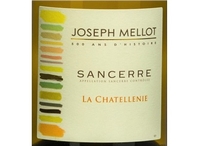 To my mind, authentic Sancerre delivers more than simply Sauvignon Blanc bite and grassy fruitiness. And this one does just that. Though not as mineral-y as some — I suspect because of the ripeness of the vintage — a lovely chalk-y mineral component still peeks through and is especially apparent in the finish.… Read more
To my mind, authentic Sancerre delivers more than simply Sauvignon Blanc bite and grassy fruitiness. And this one does just that. Though not as mineral-y as some — I suspect because of the ripeness of the vintage — a lovely chalk-y mineral component still peeks through and is especially apparent in the finish.… Read more
Jean-Marc Brocard, Chablis (Burgundy, France) “Vieilles Vignes de Sainte Claire” 2017
($35):  What a great village Chablis! It demonstrates the importance of the producer and old vines. With this wine, Jean-Marc Brocard, one of the region’s top growers, delivers more character and clarity than many producers’ premier cru. Flinty and precise, it cuts a gorgeous profile.… Read more
What a great village Chablis! It demonstrates the importance of the producer and old vines. With this wine, Jean-Marc Brocard, one of the region’s top growers, delivers more character and clarity than many producers’ premier cru. Flinty and precise, it cuts a gorgeous profile.… Read more
Maison Louis Jadot, Bourgogne Blanc (Burgundy, France) “Couvent des Jacobins” 2016
($18, Kobrand Wine & Spirits): 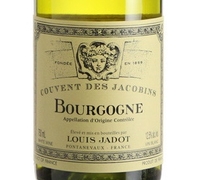 Jadot is justly proud of their “simple” Bourgogne Blanc. The grapes — all Chardonnay — come from throughout Burgundy, allowing them to alter the blend as the vintage demands. With a slightly warmer vintage, they can include grapes from cooler continue to keep the wine fresh. … Read more
Jadot is justly proud of their “simple” Bourgogne Blanc. The grapes — all Chardonnay — come from throughout Burgundy, allowing them to alter the blend as the vintage demands. With a slightly warmer vintage, they can include grapes from cooler continue to keep the wine fresh. … Read more
Castiglion del Bosco, Rosso di Montalcino (Tuscany, Italy) “Gauggiole” 2016
($37, Maisons Marques & Domaines):  Castiglion del Bosco, a top producer in Montalcino, consistently produces excellent Brunello di Montalcino and Rosso di Montalcino. They have recently added this specially selected Rosso, labeled Gauggiole after the area in which the vineyards are planted. … Read more
Castiglion del Bosco, a top producer in Montalcino, consistently produces excellent Brunello di Montalcino and Rosso di Montalcino. They have recently added this specially selected Rosso, labeled Gauggiole after the area in which the vineyards are planted. … Read more
Tenute Silvio Nardi, Brunello di Montalcino (Tuscany, Italy) 2015
($54, Kobrand Wine & Spirits):  Silvio Nardi is one of my favorite Brunello producers, in part because they are consistent and in part because they make single vineyard bottlings from different sections of Montalcino that highlight the exciting diversity of that appellation. … Read more
Silvio Nardi is one of my favorite Brunello producers, in part because they are consistent and in part because they make single vineyard bottlings from different sections of Montalcino that highlight the exciting diversity of that appellation. … Read more
Tenute Silvio Nardi, Brunello di Montalcino (Tuscany, Italy) Vigneto Manachiara 2015
($110, Kobrand Wine & Spirits):  Silvio Nardi refers to the wine from their Manachiara vineyard as a wine of the East, because the vineyard is located in the eastern part of Montalcino and the vines face southeast. The 2015 shows the ripeness of the vintage without being over the top.… Read more
Silvio Nardi refers to the wine from their Manachiara vineyard as a wine of the East, because the vineyard is located in the eastern part of Montalcino and the vines face southeast. The 2015 shows the ripeness of the vintage without being over the top.… Read more
Talenti, Brunello di Montalcino (Tuscany, Italy) 2015
($46): 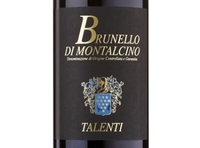 The warm and dry 2015 growing season in Brunello was the opposite of the cool and rainy weather of 2014. That weather explains the potential pitfalls for the wines — ripe and alcoholic with low acidity. Talenti avoided those problems with their 2015 Brunello. … Read more
The warm and dry 2015 growing season in Brunello was the opposite of the cool and rainy weather of 2014. That weather explains the potential pitfalls for the wines — ripe and alcoholic with low acidity. Talenti avoided those problems with their 2015 Brunello. … Read more
Tenute Silvio Nardi, Brunello di Montalcino (Tuscany, Italy) Poggio Doria 2015
($110, Kobrand Wine & Spirits):  Nardi’s Poggio Doria vineyard lies in the cooler northwest sector of Montalcino and consistently produces elegant, tightly wound wines. More closed and less powerful than the Manachiara, the Poggio Doria reflects its cooler environment. Volcanic soil here amplifies the wine’s dark mineral component. … Read more
Nardi’s Poggio Doria vineyard lies in the cooler northwest sector of Montalcino and consistently produces elegant, tightly wound wines. More closed and less powerful than the Manachiara, the Poggio Doria reflects its cooler environment. Volcanic soil here amplifies the wine’s dark mineral component. … Read more
Villa Bucci, Castelli di Jesi Verdicchio Riserva DOCG (Marche, Italy) 2014
($40):  In 2010, Italian wine regulators created a new DOCG by adding a Riserva designation to the Verdicchio dei Castelli Jesi DOC for wines that have been aged slightly longer and have been made from riper grapes. To emphasize the importance of place instead of the grape, the official name became Castelli di Jesi Verdicchio Riserva DOCG. … Read more
In 2010, Italian wine regulators created a new DOCG by adding a Riserva designation to the Verdicchio dei Castelli Jesi DOC for wines that have been aged slightly longer and have been made from riper grapes. To emphasize the importance of place instead of the grape, the official name became Castelli di Jesi Verdicchio Riserva DOCG. … Read more
Castello di Semivicoli, Abruzzo DOC (Italy) Pecorino 2018
($20):  Pecorino, in addition to being a cheese, is also a grape, which, in the right hands, makes a captivating wine. Moreover, I predict Pecorino will become the go-to white wine for Italian fare because its lively edginess cuts through most any dish and refreshes the palate. … Read more
Pecorino, in addition to being a cheese, is also a grape, which, in the right hands, makes a captivating wine. Moreover, I predict Pecorino will become the go-to white wine for Italian fare because its lively edginess cuts through most any dish and refreshes the palate. … Read more
Villa Sandi, Prosecco Superiore Valdobbiadene DOCG (Veneto, Italy) Brut 2018
($22, Folio Fine Wine Partners): 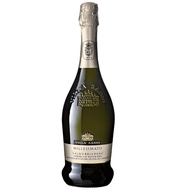 There’s Prosecco and then there’s Prosecco Superiore Valdobbiadene, which comes from sloped sites at the heart of the Prosecco production area. The 2018 from Villa Sandi, one the region’s leading producers, is graceful and lacey. Though labeled Brut, there is a pleasing softness to it without being sweet. … Read more
There’s Prosecco and then there’s Prosecco Superiore Valdobbiadene, which comes from sloped sites at the heart of the Prosecco production area. The 2018 from Villa Sandi, one the region’s leading producers, is graceful and lacey. Though labeled Brut, there is a pleasing softness to it without being sweet. … Read more
Apollonio, Salento IGP (Puglia, Italy) Negroamaro “Elfo” 2014
($16, Montcalm Wine Importers):  Negroamaro, which literally means black and bitter, is a marketing nightmare. But don’t let that deter your buying this bargain red that delivers more than its price suggests. With both black cherry-like fruitiness and delicate herbal notes, it’s more savory than fruity. … Read more
Negroamaro, which literally means black and bitter, is a marketing nightmare. But don’t let that deter your buying this bargain red that delivers more than its price suggests. With both black cherry-like fruitiness and delicate herbal notes, it’s more savory than fruity. … Read more
Bricco dei Guazzi, Piemonte DOC (Italy) Chardonnay 2017
($13, Montcalm Wine Importers):  When you think of white wines from Piedmont, Chardonnay does not spring to mind. But it is grown there and made into wine and actually has its own DOC. Bricco dei Guazzi’s 2017 delivers lush creamy fruitiness without being heavy. … Read more
When you think of white wines from Piedmont, Chardonnay does not spring to mind. But it is grown there and made into wine and actually has its own DOC. Bricco dei Guazzi’s 2017 delivers lush creamy fruitiness without being heavy. … Read more
Illuminati, Montepulciano d’Abruzzo DOC (Italy) “Spiano” 2015
($12, Montcalm Wine Importers):  Though I reviewed this wine a couple of years ago, it’s worth revisiting because it is still available at virtually the same price. Still a bargain, it shows that non-prestigious wines are not necessarily a flash in the pan.… Read more
Though I reviewed this wine a couple of years ago, it’s worth revisiting because it is still available at virtually the same price. Still a bargain, it shows that non-prestigious wines are not necessarily a flash in the pan.… Read more
J. de Villebois, Sancerre (Loire Valley, France) 2018
($26, Vineyard Brands):  Joost de Willebois, a Dutch financier, knows a business opportunity when he sees it. In 2004, he found a small Loire winery owned by someone who had no successor and he bought it with the idea of transforming it into something larger. … Read more
Joost de Willebois, a Dutch financier, knows a business opportunity when he sees it. In 2004, he found a small Loire winery owned by someone who had no successor and he bought it with the idea of transforming it into something larger. … Read more
J. de Villebois, Pouilly Fumé (Loire Valley, France) 2018
($26, Vineyard Brands):  People often ask what is the difference between Sancerre and Pouilly-Fumé. Regulations require that both wines are made exclusively from Sauvignon Blanc. Sancerre is on the west bank of the Loire while Pouilly sur Loire, the town that gives the wine its name, is about 10 miles away on the east bank of the river. … Read more
People often ask what is the difference between Sancerre and Pouilly-Fumé. Regulations require that both wines are made exclusively from Sauvignon Blanc. Sancerre is on the west bank of the Loire while Pouilly sur Loire, the town that gives the wine its name, is about 10 miles away on the east bank of the river. … Read more
Vignobles Gunther-Chéreau, Muscadet Sèvre et Maine (Loire Valley, France) “Les Vergers” Sur Lie 2016
($20):  This wine shows that Muscadet, especially those from the subregion Sèvre et Maine, can develop with bottle age. Most often, consumers think Muscadet should be consumed young with shellfish or other seafood. And that’s correct. Muscadet is a delightful — and affordable — wine for seafood. … Read more
This wine shows that Muscadet, especially those from the subregion Sèvre et Maine, can develop with bottle age. Most often, consumers think Muscadet should be consumed young with shellfish or other seafood. And that’s correct. Muscadet is a delightful — and affordable — wine for seafood. … Read more
Naumes Family Vineyards, Rogue Valley (Oregon) Tempranillo 2016
($30): 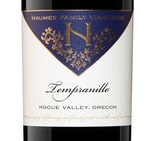 Tempranillo in Oregon? Who knew? Not I. But now I do and I will look for more after tasting this one from Naumes Family Vineyards. Tempranillo, Spain’s signature variety grown in Rioja, Ribera del Duero and Toro, is an early ripening one that does well in southern Oregon, according to producers there. … Read more
Tempranillo in Oregon? Who knew? Not I. But now I do and I will look for more after tasting this one from Naumes Family Vineyards. Tempranillo, Spain’s signature variety grown in Rioja, Ribera del Duero and Toro, is an early ripening one that does well in southern Oregon, according to producers there. … Read more
Volcanic Hills, Okanagan Valley (British Columbia, Canada) Pinot Gris 2018
($15):  The vineyards of this property lie on a slope of an old volcano, hence the name of the winery. The same grape, Pinot Gris, is used to produce wines labeled Pinot Grigio or Pinot Gris, which are very different. Pinot Grigio is usually far lighter, whereas Pinot Gris has a weight and texture. … Read more
The vineyards of this property lie on a slope of an old volcano, hence the name of the winery. The same grape, Pinot Gris, is used to produce wines labeled Pinot Grigio or Pinot Gris, which are very different. Pinot Grigio is usually far lighter, whereas Pinot Gris has a weight and texture. … Read more
Nichol Vineyard, Naramata Bench (Okanagan Valley, British Columbia, Canada) Pinot Gris 2018
($21): 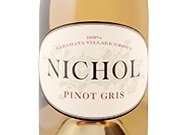 Sometimes it’s good to order blindly from a wine list without seeing the bottle or knowing anything about the wine. The label indicated this “white” wine had undergone 36-hours of skin contact and oak aging, techniques that I usually find off-putting in Pinot Gris. … Read more
Sometimes it’s good to order blindly from a wine list without seeing the bottle or knowing anything about the wine. The label indicated this “white” wine had undergone 36-hours of skin contact and oak aging, techniques that I usually find off-putting in Pinot Gris. … Read more
50th Parallel Estate, Okanagan Valley (British Columbia, Canada) Pinot Noir 2016
($30):  The 50th Parallel Estate consistently makes outstanding Pinot Noir. Their 2016 is the real thing: a balance of ripe, but not too ripe, fruit flavors intertwined with savory ones. Fine tannins provide support and allow for immediate consumption. Both delicate and expressive, it delivers the what I consider the quintessential quality of Pinot Noir, flavor without weight. … Read more
The 50th Parallel Estate consistently makes outstanding Pinot Noir. Their 2016 is the real thing: a balance of ripe, but not too ripe, fruit flavors intertwined with savory ones. Fine tannins provide support and allow for immediate consumption. Both delicate and expressive, it delivers the what I consider the quintessential quality of Pinot Noir, flavor without weight. … Read more
Dutton-Goldfield, Green Valley of Russian River Valley (Sonoma County, California) Chardonnay Dutton Ranch, Walker Hill Vineyard 2017
($50): 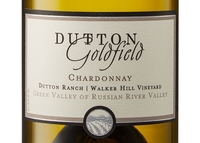 The contrasting Chardonnay under the Dutton-Goldfield label displays the same balance and suaveness as its brother from the Rued Vineyard. Instead of citrus notes, subtle toasty and nutty ones caress the palate. Still, great enlivening acidity keeps it fresh throughout the meal. … Read more
The contrasting Chardonnay under the Dutton-Goldfield label displays the same balance and suaveness as its brother from the Rued Vineyard. Instead of citrus notes, subtle toasty and nutty ones caress the palate. Still, great enlivening acidity keeps it fresh throughout the meal. … Read more
Dutton-Goldfield, Green Valley of Russian River Valley (Sonoma County, California) Chardonnay Rued Vineyard 2017
($55): 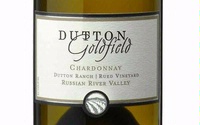 Warren Dutton, the renowned Sonoma County grape-growing farmer who tragically died in 2001, planted this Chardonnay in this vineyard in the late 1960s. Steve Dutton, his son, is now responsible for the farming, while Dan Goldfield takes care of the winemaking. … Read more
Warren Dutton, the renowned Sonoma County grape-growing farmer who tragically died in 2001, planted this Chardonnay in this vineyard in the late 1960s. Steve Dutton, his son, is now responsible for the farming, while Dan Goldfield takes care of the winemaking. … Read more
I Clivi, Friuli Colli Orientali DOC (Venezia Giulia, Italy ) Bianco 2016
($35):  Ferdinando e Mario Zanusso of I Clivi (which means the slopes) make superb wines. Their Clivi Galea is a single vineyard with 70-yesr old vines (according to their website) located on the southern tip of the appellation, near the Slovenian border.… Read more
Ferdinando e Mario Zanusso of I Clivi (which means the slopes) make superb wines. Their Clivi Galea is a single vineyard with 70-yesr old vines (according to their website) located on the southern tip of the appellation, near the Slovenian border.… Read more
Castellare di Castellina, Chianti Classico Riserva DOCG (Tuscany, Italy) Il Poggiale 2016
($35, Winebow):  Castellare di Castellina, one of Chianti’s traditional and best producers, hits the bullseye again with this Riserva. The grapes come from a single vineyard that they think produces superior fruit. After tasting it, I certainly agree there’s something special going on. … Read more
Castellare di Castellina, one of Chianti’s traditional and best producers, hits the bullseye again with this Riserva. The grapes come from a single vineyard that they think produces superior fruit. After tasting it, I certainly agree there’s something special going on. … Read more
Domaine Ktima Gerovassiliou, Epanomi IGT (Macedonia, Greece) White Wine 2019
($20):  Gerovassiliou, who is credited with saving the Malagouzia grape from extinction, blends it with Assyrtiko to create this charming wine. It is more floral than his monovarietal Malagouzia, which is surprising since one might assume that the Assyrtiko would add more structure and minerality. … Read more
Gerovassiliou, who is credited with saving the Malagouzia grape from extinction, blends it with Assyrtiko to create this charming wine. It is more floral than his monovarietal Malagouzia, which is surprising since one might assume that the Assyrtiko would add more structure and minerality. … Read more
Domaine Ktima Gerovassiliou, Epanomi IGT (Macedonia, Greece) Malagouzia Single Vineyard 2019
($27):  Vangelis Gerovassiliou, the man credited with rescuing this grape from extinction, makes a superb example of it at his estate near Thessaloniki, Greece’s second largest city and the country’s most important port. The captivating combination of subtle tropical fruits and bracing acidity is, of course, present. … Read more
Vangelis Gerovassiliou, the man credited with rescuing this grape from extinction, makes a superb example of it at his estate near Thessaloniki, Greece’s second largest city and the country’s most important port. The captivating combination of subtle tropical fruits and bracing acidity is, of course, present. … Read more
Sequoia Grove, Napa Valley (California) Chardonnay 2017
($32):  Sequoia Grove is an “old-timer” in terms of Napa Valley wineries, having been founded 40 years ago, in 1979. Their 2017 Napa Valley Chardonnay delivers richness, opulence and a healthy dose of oakiness. Good acidity keeps it fresh. Those looking for subtlety in their Chardonnay should look elsewhere, but those who embrace sumptuousness in their Chardonnay will love it.… Read more
Sequoia Grove is an “old-timer” in terms of Napa Valley wineries, having been founded 40 years ago, in 1979. Their 2017 Napa Valley Chardonnay delivers richness, opulence and a healthy dose of oakiness. Good acidity keeps it fresh. Those looking for subtlety in their Chardonnay should look elsewhere, but those who embrace sumptuousness in their Chardonnay will love it.… Read more
Shooting Star, Lake County (California) Barbera 2017
($15):  Barbera is a workhorse grape from Piedmont that has been grown in California for at least a century. Unlike Piedmont versions, which often have a briary character with invigorating acidity, this one delivers juicy red fruit flavors and finishes slightly sweet. … Read more
Barbera is a workhorse grape from Piedmont that has been grown in California for at least a century. Unlike Piedmont versions, which often have a briary character with invigorating acidity, this one delivers juicy red fruit flavors and finishes slightly sweet. … Read more
